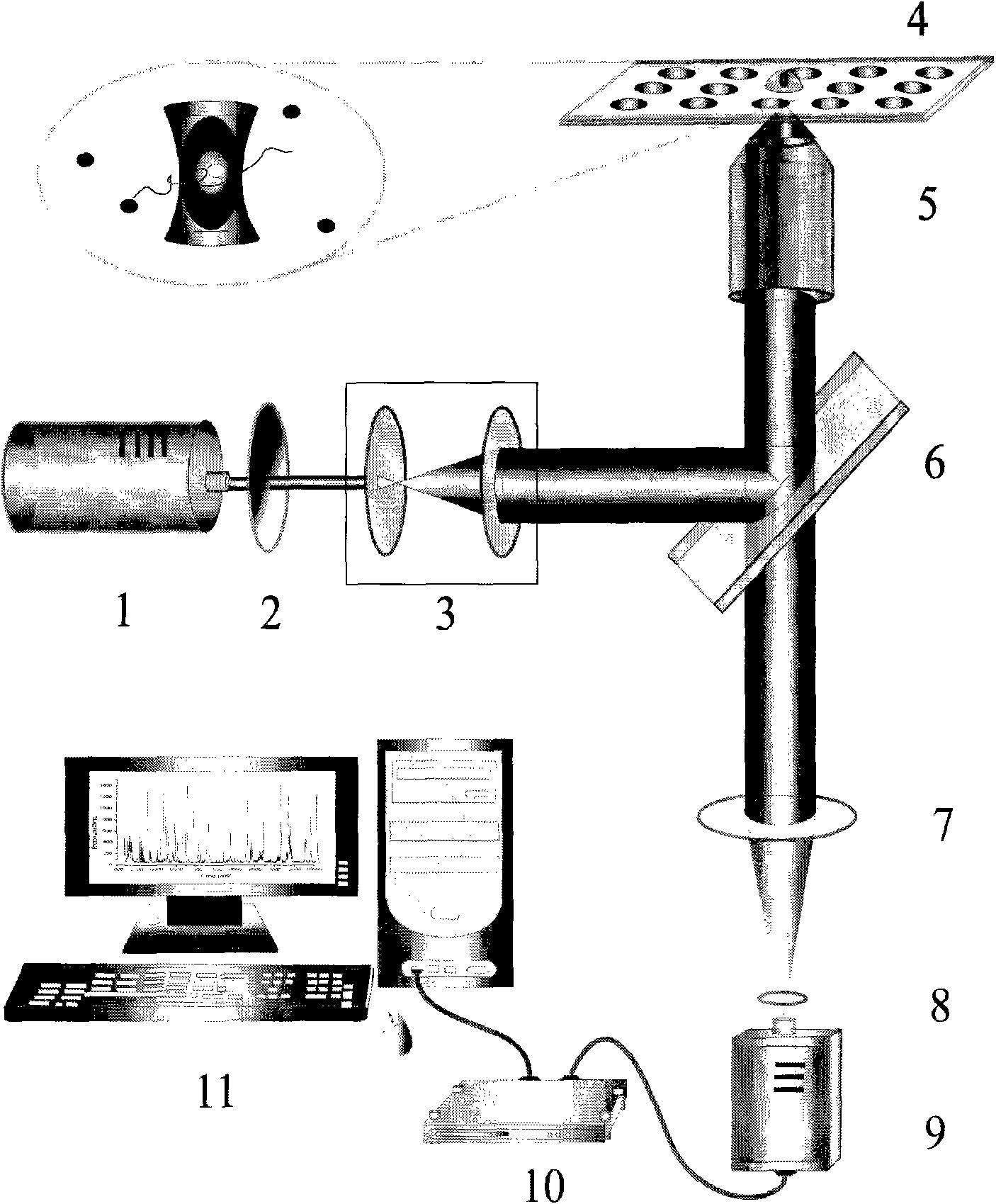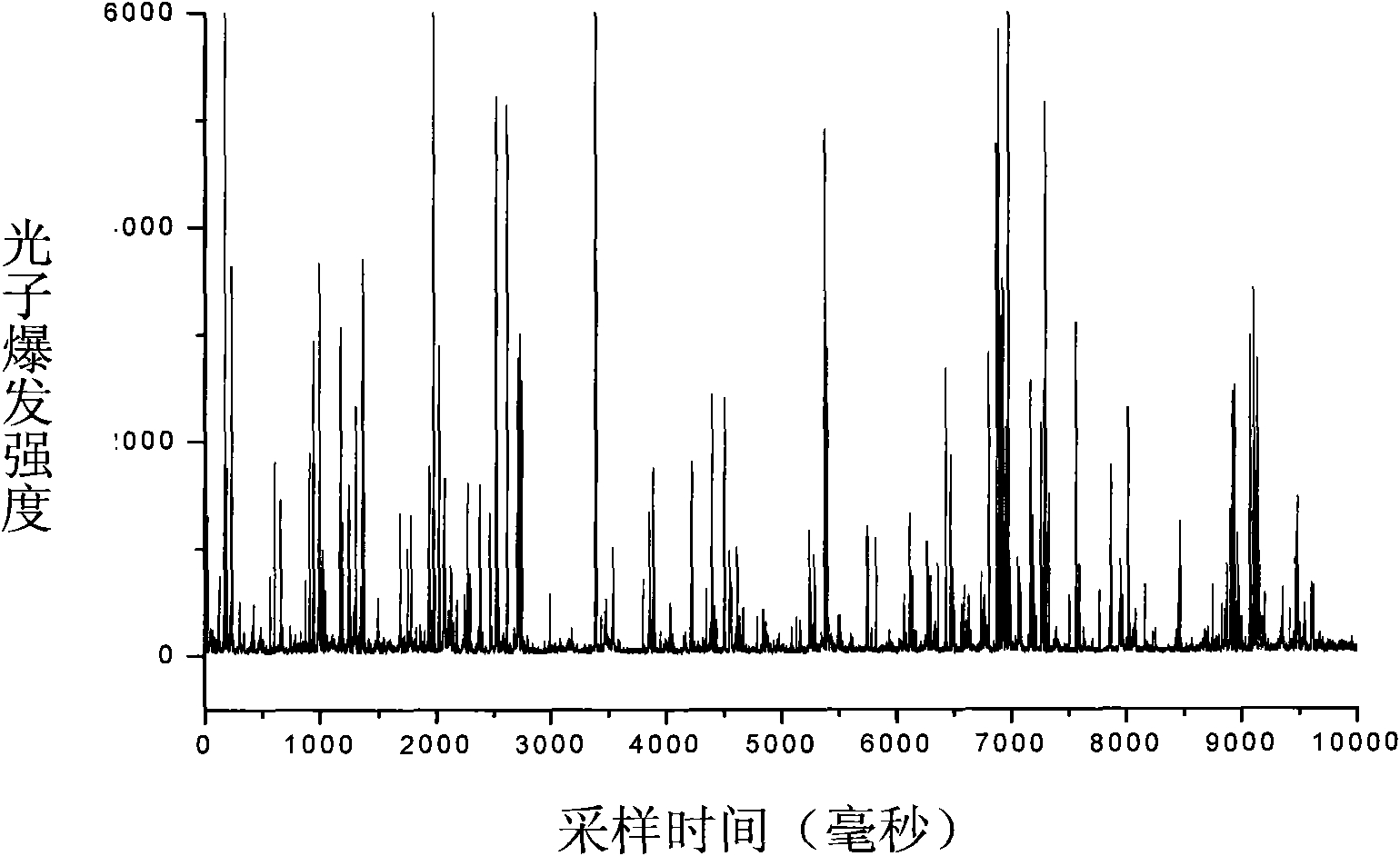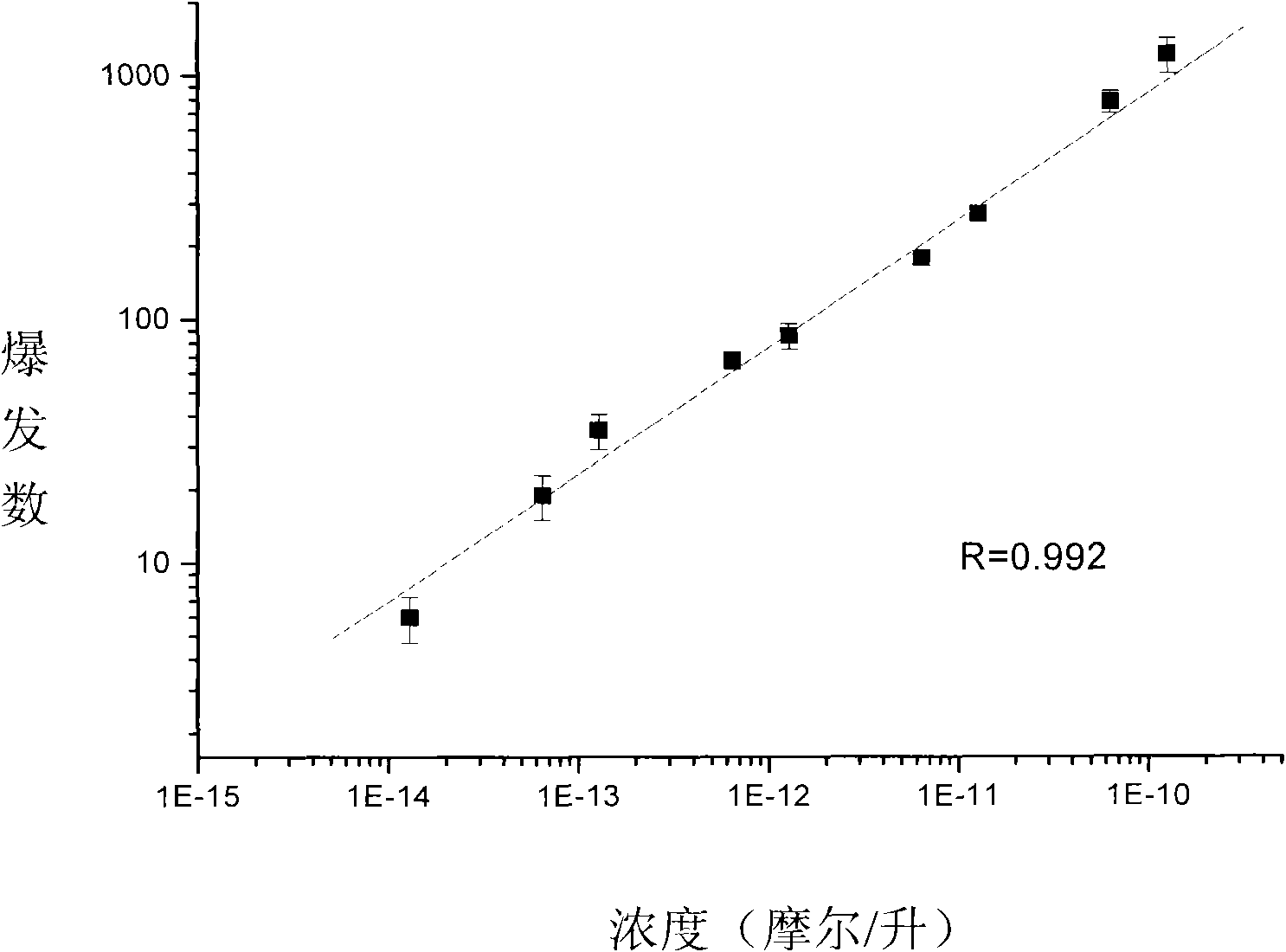Counter for metal nano particles in solution
A metal nanoparticle and counter technology, applied in scientific instruments, individual particle analysis, particle and sedimentation analysis, etc., can solve the problems of large sample volume, limited application, low sensitivity, etc., achieve simple optical configuration, broad application prospects, Improve the effect of detection sensitivity
- Summary
- Abstract
- Description
- Claims
- Application Information
AI Technical Summary
Problems solved by technology
Method used
Image
Examples
Embodiment 1
[0030] Embodiment 1 gold nanoparticle counting analysis:
[0031] Laser: He-Ne laser (632.8 nm), dichroic mirror at 650 nm,
[0032] Using a 35 micron pinhole, the sample measurement process was as described above. figure 2 A photon burst diagram of gold nanoparticles is given. figure 2 The abscissa of is the recording time (or measurement time), the ordinate is the burst intensity of photons, and each peak represents a burst. image 3 is the linear relationship between the number of photon bursts and the concentration of gold nanoparticles. The abscissa is the concentration of gold nanoparticles, and the ordinate is the number of bursts of photons (that is, the number of peaks in the figure). The concentration of gold nanoparticles in the solution to be tested can be calculated according to the linear relationship between the number of photon bursts and the concentration of gold nanoparticles by measuring the number of luminescent gold nanoparticles in an unknown solutio...
Embodiment 2
[0033] Embodiment 2 Silver nanoparticles count analysis:
[0034]Laser: Argon ion laser (488 nm), dichroic mirror at 505 nm.
[0035] Using a 35 micron pinhole, the sample measurement process was as described above. Figure 4 A photon burst diagram of gold nanoparticles is given. Figure 5 Linear relationship between the number of photon bursts and the concentration of silver nanoparticles.
Embodiment 3
[0036] Embodiment 3 gold and silver nanoparticles count analysis
[0037] Laser: semiconductor laser (543 nm), dichroic mirror 550 nm.
[0038] Using a 35 micron pinhole, the sample measurement process was as described above. Figure 6 and Figure 7 The photon burst diagrams of silver nanoparticles and gold nanoparticles are given respectively.
[0039] It can be known from the above embodiments that the metal nanoparticle counter of the present invention can accurately and sensitively detect the photon burst of a single metal nanoparticle. At the same time, because the number of photon bursts of nanoparticles in the solution is proportional to the concentration of nanoparticles, the concentration of metal nanoparticles can be determined according to the number of photon bursts.
PUM
| Property | Measurement | Unit |
|---|---|---|
| diameter | aaaaa | aaaaa |
| particle diameter | aaaaa | aaaaa |
| particle diameter | aaaaa | aaaaa |
Abstract
Description
Claims
Application Information
 Login to View More
Login to View More - R&D
- Intellectual Property
- Life Sciences
- Materials
- Tech Scout
- Unparalleled Data Quality
- Higher Quality Content
- 60% Fewer Hallucinations
Browse by: Latest US Patents, China's latest patents, Technical Efficacy Thesaurus, Application Domain, Technology Topic, Popular Technical Reports.
© 2025 PatSnap. All rights reserved.Legal|Privacy policy|Modern Slavery Act Transparency Statement|Sitemap|About US| Contact US: help@patsnap.com



